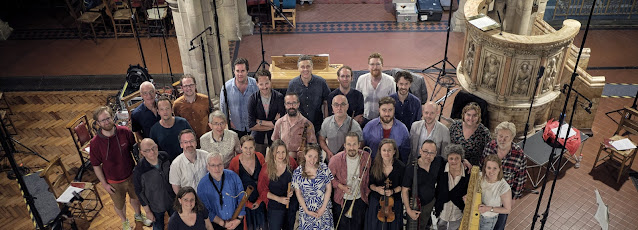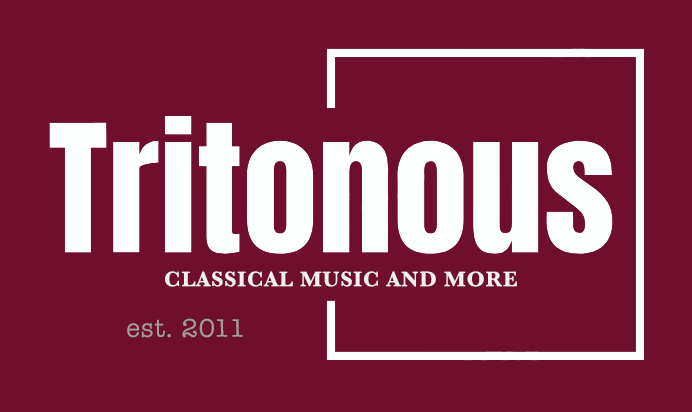 |
| I Fagiolini during recording sessions for the Benevoli project |
From Venice (to Rome) with Love – Benevoli: Missa Benevola, Monteverdi motets, Carissimi: Jephte; I Fagiolini, the Choral Scholars of St Martin-in-the-Fields, The Lyons Mouth, Robert Hollingworth; Church of St Martin-in-the-Fields
Reviewed 4 October 2024
An evening of glorious musico-spatial magic as I Fagiolini revive a rare 17th-century mass for four choirs written for St Peter’s Basilica in Rome
In July 2000, I sang in a performance of Orazio Benevoli’s Missa Tu es Petrus, a mass for four choirs based on Palestrina’s motet Tu es Petrus. Benevoli, a 17th century Roman composer, was a name that was knew to me and the mass was an astonishing experience. Since then, Benevoli’s music has remained somewhat obscure, but in 2023, Robert Hollingworth and I Fagiolini started a project exploring Benevoli’s multi-choir works. Their first disc, released last year on Coro, featured the Missa Tu es Petrus and now they have returned to the composer with his Missa Benevola, also on Coro.
On Friday 4 October 2024, Robert Hollingworth and I Fagiolini brought Benevoli’s Missa Benevola (Missa Maria Prodigio Celeste) to the Church of St Martin-in-the-Fields in their programme From Venice (to Rome) with Love. The programme featured Benevoli’s mass performed by I Fagiolini, the Choral Scholars of St Martin-in-the-Fields and The Lyons Mouth interspersed with smaller scale motets by Monteverdi and completed by a performance of the Historia di Jephte by Benevoli’s almost exact Roman contemporary, Giacomo Carissini. Continuo was provided by Catherine Pierron (organ), Aileen Henry (harp) and Eligio Quinteiro (chittarone).
17th century Rome responded to the elephantiasis happening to the church buildings by expanding choral forces for grand occasions. This expansion however, did not involve the sort of mammoth choirs that we have come to expect, following late 18th-century and 19th-century practice in Bach and Handel. Instead, the number of parts was increased, music for three choirs and music for four choirs, and the number of choirs might increase further so that a mass for four choirs would be performed by eight choirs dotted around St Peter’s Basilica. Each with their own conductor and organist, the result must have been glorious and, sometimes, a complete mess.
Robert Hollingworth explained some of this background at the concert, describing what we know about these performances. For the performance at St Martin-in-the-Fields, I Fagiolini was split into four choirs (of four singers each), but in the gallery there were also four more choirs made up of singers from the Choral Scholars of St Martin-in-the-Fields and The Lyons Mouth, and in the performance Hollingworth orchestrated these, sometimes using just four groups and sometimes eight, creating a wonderful surround-sound effect.
The scores of the new editions of Benevoli’s masses, created for I Fagiolini’s performances, are available from the Prima la Musica website. And as you wonder about trying to perform this music from an admirably clear modern score with all the parts, imagine those first performers each singer using a part-book with just their own part in it! I Fagiolini have produced a nice ‘behind the scenes’ video about recording Benevoli’s Missa Benevola on YouTube.
Benevoli clearly enjoyed the spatial effect of the music, passing passages of polyphony from group to group, sometimes in a gentle way, sometimes with greater impulse leading to grand tutti effects. The result was rich and glorious, but then everything would fall away to leave just a few voices so that the central section of the Kyrie was just upper voices. For most of the time, we got spacious grandeur, painting in sound. But for all the glorious noise, there was a surprising amount of detail and definition with words coming over. In the Credo, ‘Et incarnatus’ kept things to the four choirs but presented the words with strength, the striking gesture reserved for an amazing passage for just four sopranos at ‘Et Crucifixus’.
The result was glorious spatial magic. This, perhaps, is not the deepest or the most intense of music, but it is glorious and remarkably sophisticated.
In between the movements we heard motets written by Monteverdi, some forty years older than Benevoli. Monteverdi revolutionised the church music of his predecessors in Venice, replacing the polychoral tradition with something more intense. Yet fashion changed again with Benevoli in Rome. The contrast was striking. For the continuo in Monteverdi’s motets Robert Hollingworth took up the organ, with Aileen Henry and Eligio Quinteiro.
The evening began with Monteverdi’s 1603 Stabat virgo Maria, a contrafactum of the madrigal, Era l’anima mia. Here sung by six singers, it was concentrated and intense, very full polyphony with Monteverdi enjoying using contrasting smaller groups. After the Gloria of the Benevoli mass, we heard Laudate Dominium from Monteverdi’s 1651 Messa a quattro voci e Salmi, a solo from Frederick Long that was vivid and rather dark in colour. The text setting very free, yet not a little virtuoso too. The second half opened with Monteverdi’s duet Salve Regina from the 1645 Selva Morale e Spirituale sung by tenors Nicholas Mulroy and Matthew Long. This was a particular highlight, with wonderfully vivid vocal acting from both performers, rhetoric combined with some fabulous bravura moments. Then before Carissimi’s Jephte we heard Adoramus te from Bianchi, Motetti of 1620, a six-part piece that was powerful and surprisingly direct.
Carissimi’s Jephte, written before 1648, represented a new direction for sacred music. Written not for the liturgy but for the spiritual recreation of the listener, originally written for the Oratorians, founded by Felipe Neri. The result is surprisingly direct and compact. There were solos, for Greg Skidmore as Jephte and Elspeth Piggott as his daughter, with a choir of six, but apart from Piggott’s final solo, the sections are short and the story rattled along at a pace. We are a world away from Bach and Handel’s longer, more reflective approach, here the story was compact and vivid. The performances were wonderfully engrossing and I enjoyed the way Carissimi kept changing the line up, so short choral sections would be followed by small ensembles, such as a trio of narrators at one point, or a duet for Jephte’s daughter’s fellow women, and an echo effect for two off-stage sopranos during the daughter’s long final solo.
Skidmore was admirably strong and virile in the title role, but Carissimi gave him little time for remorse. Piggott, however, got the chance to move from the pure charm of her entrance to the long, moving solo where she bewails her fate, Piggott moving from freely expressive and ornamental to something vivid and powerful. But the final word went to the chorus, with a slow chorus, ‘Weep, children of Israel’ sung in a remarkably full-blooded manner. The whole performance was like that, remarkably expressive and given in full voice, vibrant and communicative, there was nothing boiled down about this Jephte, it was short, yet powerfully concentrated.
The blog is free, but I’d be delighted if you were to show your appreciation by buying me a coffee.
Elsewhere on this blog
- After the humans are gone, the instruments still sing and it is important to listen – Jake Heggie on his song cycle, Intonations: Songs from the Violins of Hope – interview
- Innate theatricality: composer Adrian Sutton definitively moves out of the theatre with a challenging yet engaging concerto for violinist Fenella Humphreys – record review
- Eternity In An Hour: Keval Shah and Jess Dandy on their unique reimagining of the Bhagavad Gita – feature
- A focus on the flute: London Handel Players in a group of cantatas Bach wrote in 1724 with virtuoso flute parts – concert review
- A special treat: strong individual performances & superb ensemble in WNO’s revival of Puccini’s Il trittico – opera review
- Embodied sound: Zubin Kanga on his innovative approach to new technology through his interdisciplinary musical programmes – interview
- Compelling performances: Stephen Hough, YL Male Voice Choir, Santtu-Matias Rouvali and the Philharmonia – concert review
- Investing in the magic of Purcell’s music: The Fairy Queen from The Sixteen at Cadogan Hall – opera review
- High-quality music-making & imaginative programming in the special natural setting of Exmoor & Dartmoor: I chat to Tamsin Waley-Cohen of the Two Moors Festival – interview
- A superb sense of community: Mascagni’s Cavalleria Rusticana at Blackheath Halls Opera – opera review
- Home











